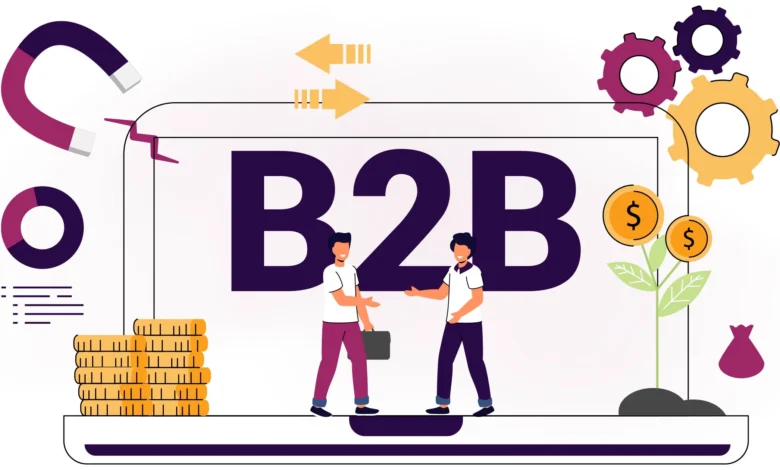B2B Lead Generation in 2025: What’s Working and What’s Not

The B2B lead generation environment has completely transformed in recent years. With smarter buyers, fiercer competition, and technology changing at a pace, businesses are rethinking how they reach prospects. What was working even two or three years ago is perhaps outdated or irrelevant now.
In 2025, the job is not just to generate leads but to contact them in a way that feels real-time, on time, and valuable. Let’s take a closer look at what’s performing, what’s not, and where businesses should focus their efforts.
What’s Working
Personalised outreach
One-size-fits-all messaging is in decline. Today’s buyers expect to receive communication that addresses their individual needs, industry situation, and business concerns. Firms that take the time to learn about their prospects before calling them are experiencing higher engagement. That does not always entail deep research on every lead, but agreeing on tone, content, and value propositions makes a huge difference.
Content-led strategies
High-quality, informative content remains a key driver of engagement. Whitepapers, webinars, podcasts, and research reports still draw interest when they provide real insight, not thinly disguised sales messages. Prospects don’t need materials that assist them in making better-informed decisions, but another product brochure. Indeed, many organisations indicate leads are now carrying out more self-education before ever talking to sales teams.
Account-based marketing (ABM)
Focusing on individual high-value accounts with tailored campaigns remains a good idea. ABM enables organisations to bring sales and marketing closely together, with messaging that is consistent and relevant. With AI-powered analytics, businesses can now identify decision-makers, track intent signals, and customise outreach more precisely than ever before.
Social selling
Platforms such as LinkedIn continue to be vital for B2B networking. Salespeople who establish thought leadership, have insightful conversations, and exchange value-added insights are having doors open more readily. The secret is authenticity—merely blasting connection requests or promoting product updates does not usually work. Rather, long-term value creation reaps benefits.
What’s Not Working
Cold calling at scale
The times when high call volumes could consistently produce leads are dwindling rapidly. The majority of prospects completely eliminate unknown numbers, and digital screening and gatekeepers make it even more challenging. Cold outreach is still relevant, but in order to be successful, it needs to be more intelligent, more informed, and warmer.
Generic email campaigns
Bulk emails with minimal personalisation are more and more filtered out or rejected. Automation can still be used, but it has to be complemented by personalisation. Relying too much on templates usually indicates to the receiver that they are simply one among many in a database.
Chasing vanity metrics
Concentrating on clicks, impressions, or open rates but not on actual business influence is a trap. In 2025, businesses are realising that lead quality is much more important than lead quantity. A smaller number of high-quality opportunities will usually produce better returns than an inflated pipeline with unengaged contacts.
Over-automation
Though technology is important, relying too much on chatbots, automated messages, or AI-powered scripts can be a mistake. Consumers are quick to pick up when responses feel impersonal. The best approaches blend automation with personal interaction, preventing efficiency from sacrificing authenticity.
Where Companies Are Shifting Focus
Numerous organisations are testing hybrid strategies—blending old tactics with new tools to hit the sweet spot. For example, data analysis can determine which leads are call-worthy, while social interaction and content warm up prospects until the time is ripe.
Surprisingly, buyers are preferring businesses that exhibit consistency and patience. Trust building may take several touchpoints over months rather than instant conversions. Companies that work with prospects as long-term partners, not instant wins, are experiencing better results.
Some companies, like JMS, are embracing relationship-driven methodologies that value and trust over pushing to sell. This is part of a larger industry shift in which empathy, listening, and credibility are at least as valuable as technical solutions.
Final Thoughts
By 2025, quality will be more important in generating business-to-business leads than quantity. Customers are well-informed, discriminating, and resistant to stale strategies. Value-based communication, customised outreach, and genuine engagement are what are effective. What doesn’t work is quantity, impersonal, and overly automated efforts, neglecting the human aspect of business relationships.
For companies operating in this environment, the secret is a balance between technology and humanity. The best plans don’t seek quick fixes but rather establish trust in the long term. When executed properly, b2b lead generation in 2025 is less about selling and more about collaboration—one that could come to characterise future business development.





